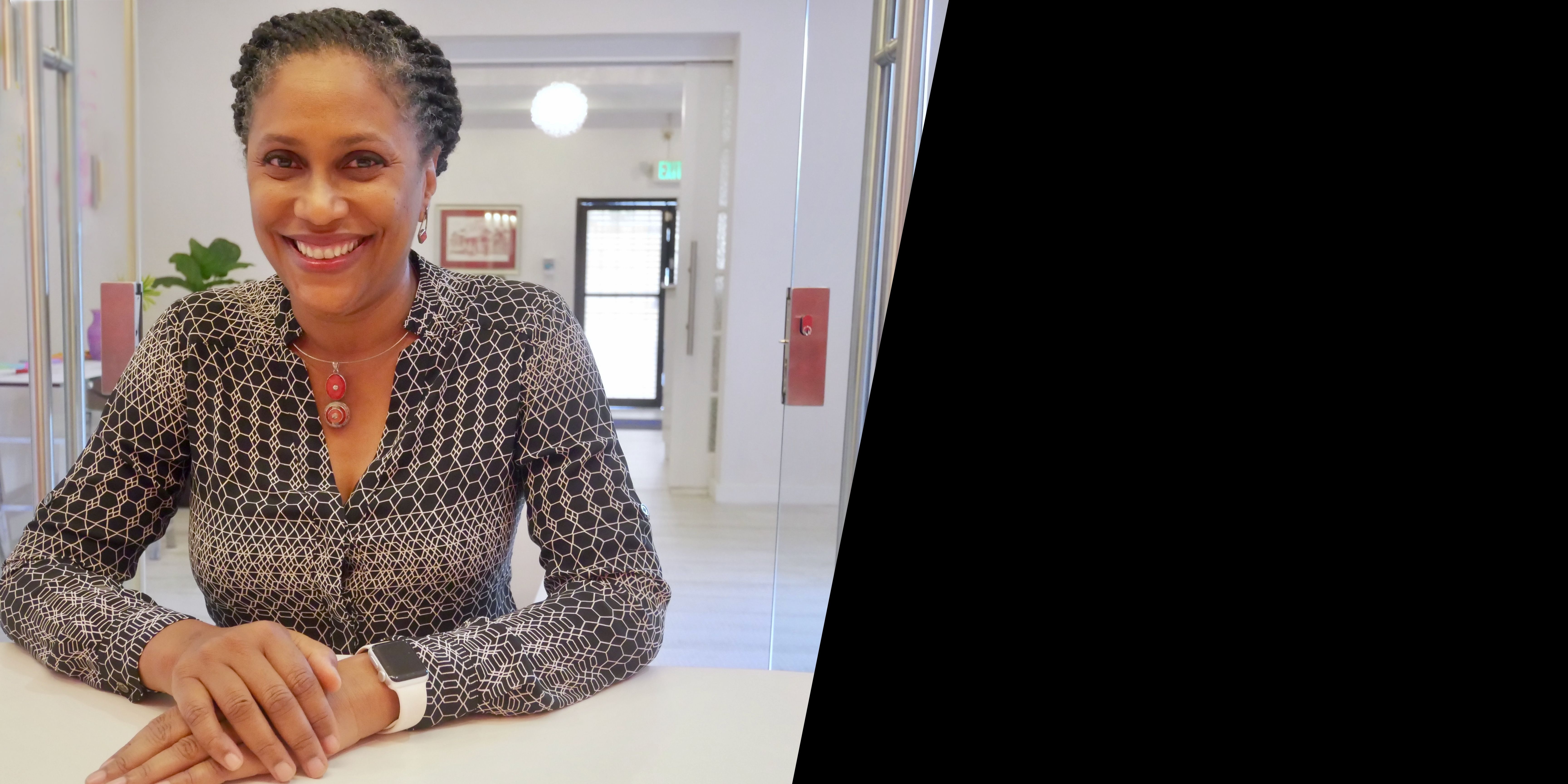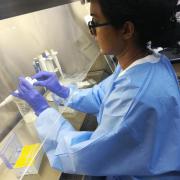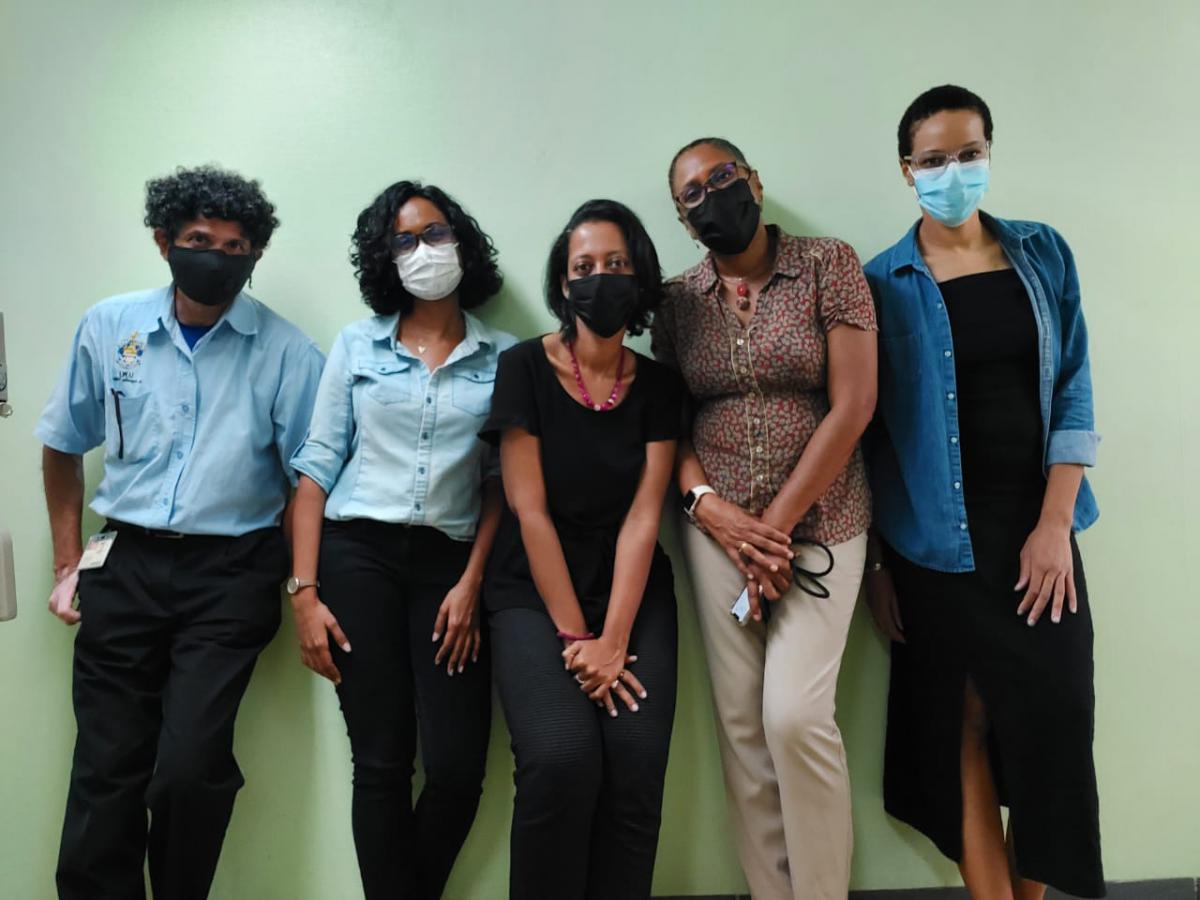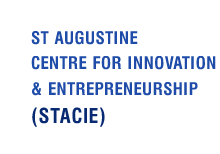
When the COVID-19 pandemic struck in 2019, Dr Christine Carrington, Professor of Molecular Genetics and Virology in the Faculty of Medical Sciences at UWI St Augustine knew that viral genome sequencing could assist epidemiologists and public health officials understand and respond to the changing epidemic.
Responding to a call for proposals from the University's Research and Development Impact (RDI) Fund for projects directly addressing stakeholder needs related to the COVID-19 pandemic, Prof. Carrington pulled together a research team (including co-investigators from the Ministry of Health, Caribbean Public Health Agency (CARPHA) and the Universities of London and Oxford), applied to the RDI Fund and was awarded seed funding to set up capacity for rapid whole genome sequencing of the COVID-19 virus (SAR-CoV-2) at The UWI.
With this project, UWI, St Augustine has become the only facility providing whole genome sequencing of viruses to the CARICOM region. It also does SARS-CoV-2 sequencing for Trinidad and Tobago (on behalf of the Ministry of Health) and 16 other countries on behalf of CARPHA.
What is genome sequencing?
Genomes are the hereditary “blueprint” for all living organisms and viruses. Most genomes are DNA (deoxyribonucleic acid), but some viruses including SARS-CoV-2, use a closely related molecule called RNA (ribonucleic acid). DNA and RNA are made up of small building blocks called nucleotides, of which there are four types, each of which can be represented by a letter.
Genome sequencing is the process of determining the sequence of nucleotides in a genome. “The genetic material is like a long chain of letters that form words. What we're doing is working out the order in which the letters occur so that we can ‘read’ those words. RNA viruses frequently undergo mutation (natural genetic change) where those letters are changed. The accumulation of these changes over time can be tracked by sequencing, recording and analysing virus genomes,” Prof. Carrington explained.
The project, called COVID-19: Infectious Disease Molecular Epidemiology for PAthogen Control & Tracking (COVID-19 IMPACT), would allow rapid whole genome sequencing for SARS-CoV-2 circulating in the Caribbean. Caribbean public health bodies could then use the information from sequence data to inform public health activities to mitigate and control COVID-19.
“We’ve been doing this type of genomic surveillance work on other viruses for a long time. [In the past], we would sample viruses from the population, get human clinical diagnostic samples, samples from different animals or whole mosquitoes and look for viruses in them,” she said. “We used to send samples overseas for sequencing by our international collaborators, they would send the sequence data back to us and we'd do the analyses.”
The sequencer already on the main campus was not well-suited for rapid sequencing. The project proposed using a rapid genome sequencing platform called the Oxford Nanopore Technology MinION and a suite of open-source SARS-CoV-2 specific protocols and bioinformatic tools. This new technology would allow researchers to generate and analyse viral genomic data in near real time. That way public health decisions could be made quickly.
“When the Covid-19 pandemic started, we realised that we really needed that capacity in the country. Every country had their own COVID-19 issues to deal with and with all the border closures and restrictions, it would be difficult sending samples. So we wanted to get that capacity here. With CARPHA based in Trinidad, it was also an opportunity to serve the region. They already had a system for receiving samples, even in difficult times.”
But just what can researchers determine from sequencing viruses? According to Prof. Carrington, quite a lot.
Over time, viruses evolve giving rise to multiple “lineages”, which are descendants of the original virus that have accumulated mutations that distinguish them from the original virus and from each other. Genetic sequencing allows scientists to characterise these lineages to get useful information.
“Using genome sequence data, you can reconstruct a sort of family tree of all the lineages and that family tree carries information you can infer a lot from,” Carrington said. “Because viruses evolve very quickly, if you know when and where you isolated a particular virus, you can work out when particular lineages arose, where they arose, and you can work out the rate at which certain lineages are growing.”
This information helps public health officials track how an epidemic is progressing and determine appropriate interventions to help stop it. They can also see how well mitigation strategies are working against the epidemic.
Tracking an epidemic

By December 2020, Dr. Nikita Sahadeo, a postdoctoral researcher on the project team, who has done most of the sequencing in the lab so far along with lab technician Vernie Ramkissoon, had begun sequencing several COVID-19 positive samples.
The Ministry of Health supplied samples from Trinidad and Tobago directly and through CARPHA. Eleven other CARPHA member states had also signed on to participate in the project. That number would later rise so that17 member states now send their SARS-CoV-2 samples for sequencing.
In early January 2021, the first cases of the Alpha variant (a.k.a B.1.1.7 which was first detected in the UK) were reported by the project. First in Jamaica, and then about a few weeks later in samples collected in T&T, Barbados, Cayman Islands and St. Lucia. It was around that time that the project took on a new focus.
“When the project was conceived, we were expecting them [public health bodies] to come to us occasionally and ask us to characterise a virus in a particular sample or help to investigate a cluster. They might want to know, for example, if a set of infections were linked to each other or if were the result of independent chains of viral transmission in people who just happened to end up in the same place at the same time,” Prof. Carrington said.
“And then of course in December, about two weeks after the project had produced its first genome sequences, the variants of concern emerged. Suddenly there was this big need for genomic surveillance, basically screening samples for these variants of concern ... So we were very pleased that we had that capacity up and running in time to respond to that.”
The team has served a critical role, supporting CARPHA and the Ministry of Health in their responses to the pandemic throughout the region. Prof. Carrington explained that not every positive sample is sequenced: “When we started routinely doing surveillance, resources were a limiting factor, definitely, but you don’t need to sequence everything. The number of samples that you want to sequence will be determined by the type of question you want to ask. Also, not every positive sample has enough virus in it to be useful.”
Since their emergence, the most pressing question has been whether a given variant is present in a country. Now that all four variants of concern have been detected in the region, Prof. Carrington thinks new questions will arise.
“For example, with P.1, the Gamma variant, in T&T, I think one of the priorities is to work out, the rate at the Gamma variant is growing compared to other lineages,” she said.
She added: “There is data to suggest that it [Gamma] is more transmissible, but we don't know how much of the increased transmissibility they observed in Brazil is an inherent property of the virus and how much is a property of the conditions under which it was circulating. So there's more work needed there.”
What's next?

As the project’s RDI Fund grant funding comes to an end, the Ministry of Health has funded a sequencing device with a higher throughput, the Pan American Health Organisation has provided additional personnel, and CARPHA has been able to provide some additional reagents and supplies towards keeping this critical service operating.
Ms. Lois St Brice, Manager - Funds and Strategic Initiatives at STACIE and manager of the RDI Fund Secretariat, said that the project has demonstrated the importance of continuous investment in research and development.
“The RDI Fund was capitalised by the GORTT who remains the sole donor to date,” she said. “Although subventions have stopped since 2013, with careful stewardship, we have been able to continue supporting impactful projects that address right on time needs of our society.”
She said that she was proud that the RDI Fund was able to support the genome sequencing project. “We are extremely pleased to see how quickly and efficiently it has been mobilised. The project is already generating impact, in line with the design of the Fund.”
St Brice added: “We hope that relevant stakeholders will have greater appreciation for the value of these types of funding sources and will be moved to reinstate and continue providing financial support for the Fund.”
Prof. Carrington believes that genome sequencing will be needed even after the COVID-19 pandemic has ended.
“I think it will become a mainstay of public health responses, and as we know, I'm sorry to say, SARS-CoV-2 wasn’t the first and isn't going to be the last virus with pandemic potential to emerge from an animal population into the human population.
“And I hope that in future we will be able to respond in a manner that prevents it from becoming a pandemic. But we need to know what's out there, we need to be able to detect things as early as possible. So, I think this type of surveillance is very important,” she said.
She dreams of a centre for infectious disease and genomics research.
“I would really love to see the University continue to use infectious disease research and genomics to support public health bodies in anticipating and responding to infectious disease threats. A sort of Caribbean genomic surveillance network with a node in T&T that can really facilitate rapid detection of biological threats and inform responses,” she said. “We need evidence-based interventions tailored to our local and regional context and with the right investment The UWI can underpin that”.
Referring to herself as “not having a business bone in her body”, Prof. Carrington is relying on the team at STACIE to advise on how the service could be supported in the future to ensure financial sustainability so they can continue to provide relevant services to the region, during this pandemic and beyond.
All the SARS-COV-2 sequence data generated by the project team is shared with international researchers via GISAID, a free and open access database that encourages open and rapid data sharing without contributors forfeiting intellectual property rights, thus facilitating real-time progress in pandemic virus research.
Using this platform means that Caribbean SARS-CoV-2 sequences and insights arising from their analysis are readily available to the local and global scientific community.
“It means that the Caribbean is represented in global COVID-19 research efforts and taken into consideration in the development of control strategies, vaccines and therapeutics,” Prof. Carrington explained. “It's important for us to be represented.”








